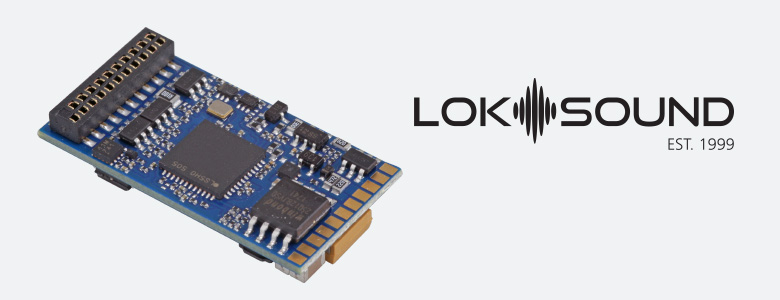 September 25 2019
September 25 2019 Capacitors, Current Keepers, Keep Alives, Oh My! Tips and tricks for programming ESU LokSound 5 Decoders.
By Maxwell Brisben, TTE Tech
So, you have a locomotive with ESU LokSound 5 and a capacitor wired up. They work wonders for getting your locomotives over areas with bad connection, but when it’s time to update the firmware, change CV values, or write new sounds, there’s a few things to keep in mind before doing so. First and foremost, it is recommended that only an ESU 54671 Power Pack Mini or an ESU 54672 Power Pack Maxi be directly wired to an ESU decoder. It is possible to use other capacitors such as TCS or Soundtraxx if they are wired to a separate motherboard like the NixTrainz Decoder Buddy, or if you have a way of disconnecting the capacitor by using a 2 pin connector.
Writing Sound Files, Disabling/Enabling ESU Power Packs: It is impossible to write sound files to your LokSound 5 decoder using a Lokprogrammer through a programming track, if you have any kind of non-ESU capacitor wired directly to the decoder, or if the ESU power pack is enabled. As a general rule of thumb, the recommended way to write sound files and program a decoder is with an ESU 53900 Decoder Tester. If the decoder can’t be removed or you don’t have a Decoder Tester handy, you can still write sound files through the LokProgrammer programming track. In order to write sounds, you have to disable the function output responsible for charging the ESU Power Pack (AUX9 for LokSound, AUX7 for Micros and Directs). Ideally, you should disable the capacitor before doing any sort of programming. Note that this only works with ESU active capacitors that are wired to AUX9 or AUX7. To do this, follow this CV sequence:
CV 31 = 16
CV 32 = 0
CV 339 = 0 or CV323 = 0 for Micros or DirectsYou should now be able to program your decoder accordingly.
Once you are done, follow this sequence to enable the charge function output:
CV 31 = 16
CV 32 = 0
CV 339 = 31 or CV323 = 31 for Micros or Directs
Changing Decoder Options: If you are using a LokProgrammer and programming track to change decoder options, function mapping, or motor settings when any kind of capacitor is installed, there is no special procedure to follow within the software. It is a best practice to go through and make all the changes you want, then write those changes to the decoder all at once. The locomotive may start up on its own and begin to move briefly. Once the Lokprogrammer has finished, leave the locomotive on the programming track for a full 5 minutes for the changes to take effect. Not doing so will result in the decoder getting scrambled.
Changing CVs: The best way to do light CV changes, such as changing the horn, bell, or speed matching, is through your preferred NMRA compliant DCC command system. Once you’ve changed a CV, remove the locomotive from track power for a few seconds for the change to take effect. If you have a capacitor installed and enabled, leave the locomotive off track power until the capacitor is drained. A good way to judge this is to leave a headlight on. Once the headlight has turned off, you know that the capacitor has been drained and the locomotive can be placed back on track power.
For more detailed programming information, please refer to the full Loksound 5 manual, available for download here: http://www.esu.eu/en/downloads/instruction-manuals/digital-decoders/
You can purchase an ESU LokProgrammer here: https://tonystrains.com/product/esu-53452-lokprogrammer
You can purchase an ESU 53900 Decoder Tester here: https://tonystrains.com/product/esu-53900-profi-decoder-tester
